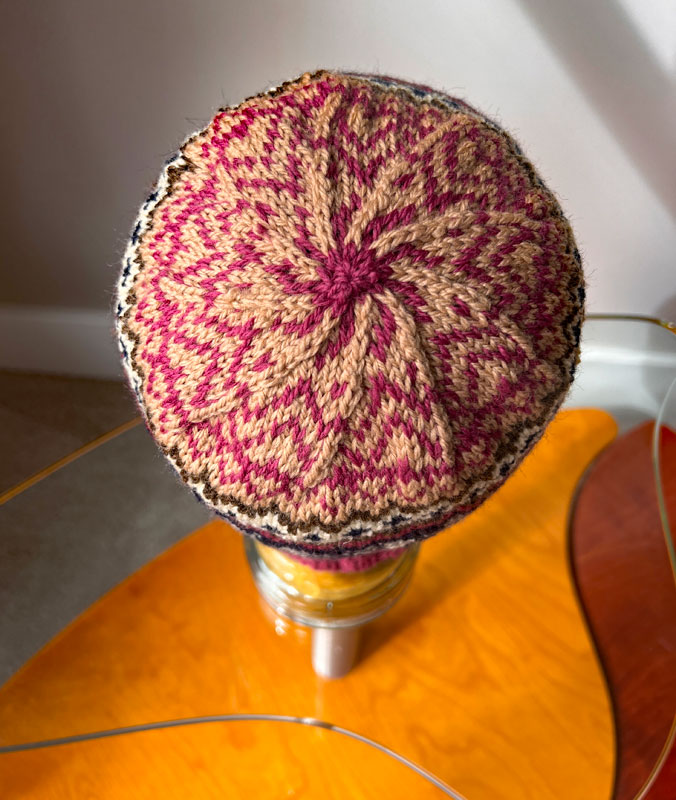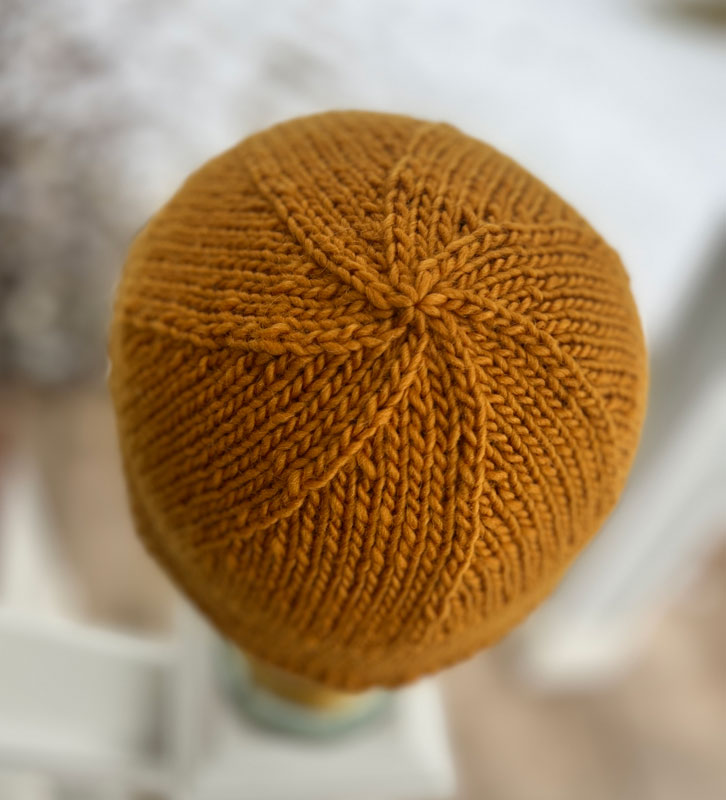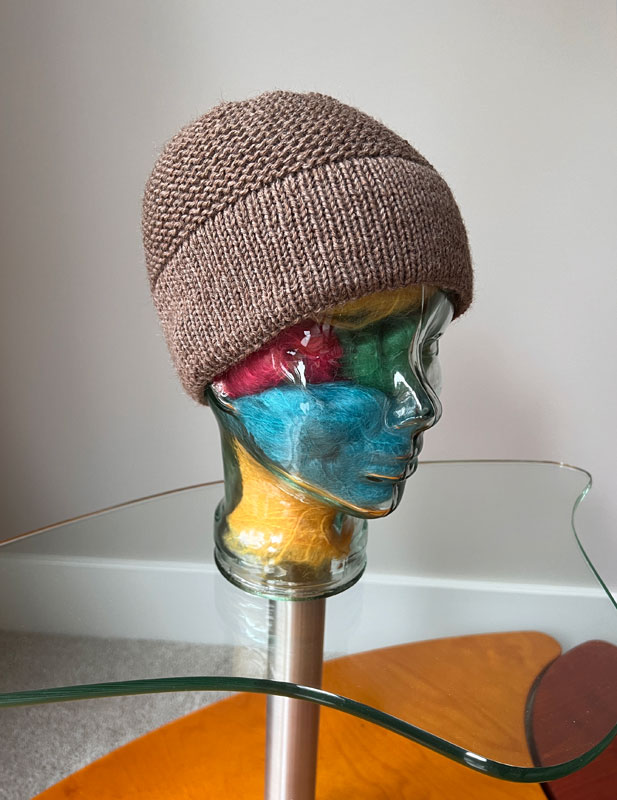
We’ve had the weirdest entry into winter in recent memory here in southwest Michigan. December was the warmest on record in eons. And there was no snow. None. OK. One dawn we woke to a dusting on the lawn but it was gone with the sunrise so that doesn’t count. But snow is on the way in the coming week or so. The 1/2 inch we had last night hasn’t yet disappeared and it’s nearly noon. Plus very soon the highs will be only in the 20’s (Fahrenheit). Definitely the time to feature hats.
This first pattern is Jeanette DeVita’s Seafarer’s Beanie. It’s a freebie available through Ravelry or directly downloadable at The Seaman’s Church Institute website. I don’t think I can do better than the Institute’s website to describe itself and its mission:
Since 1898, volunteers of the Seamen’s Church Institute have knitted, collected, packed, and distributed gifts to mariners who were miles away from home during the holidays. Today, for seafarers calling on the Port Newark and Elizabeth in New Jersey, the gift consists of two hand-knitted garments, a Christmas card, and information on SCI’s services for mariners along with toiletries like hand lotion, lip balm, and toothbrushes, and individually-packaged candy or snacks. The items for the seafarers’ gifts are housed in an individual hand-sewn ditty bag, and they are delivered to the ships by SCI chaplains from the Monday before Thanksgiving through Epiphany on January 6. Mariners working on U.S. inland rivers receive a box for each boat containing handmade Christmas cards and a knit for each mariner.
The only modification I made to DeVita’s pattern was to work the double-thick earband by knitting the live stitches into the cast-on ones. Joining live stitches to a traditional cast-on is always an awkward process for me. So I used a provisional crochet cast-on. And when the time came for the join, I removed the provisional cast-on, placed the stitches on a second circular needle, and then knit the two sets of live stitches together onto my working needle. That worked well. Also, it made for a more stretchy join that helps the hat fit larger heads.
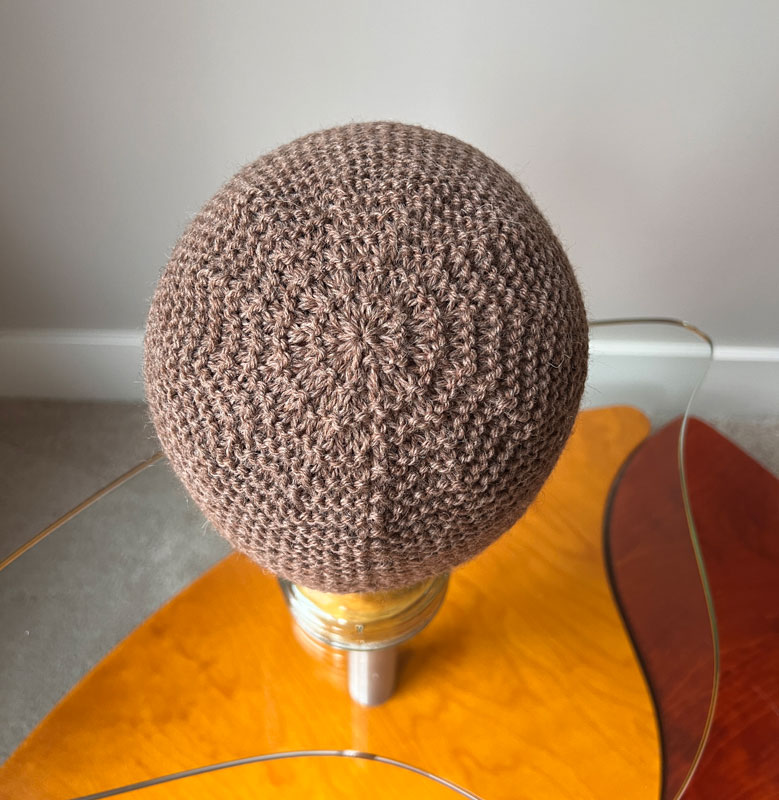
The crown decreases are super simple but very effective in making sure that the top of the hat lays flat. Allright. A digression. I know that English grammar is not a matter of consensus building. But does the top of my hat lay flat or lie flat? What I recall being drilled into me is that you lay in a bed you don’t lie in it. (Though I supposed you might speak lies in a bed also.) And you lie with your mouth and obviously don’t lay with your mouth. In search of some clarity, I consulted the Associated Press Stylebook.
AP says that “lie indicates a state of reclining along a horizontal plane and does not take a direct object.” The phrase “lay flat” has no direct object. And maybe my hat’s crown is sort of in a state of reclining along a horizontal plane. Do you think? The past tense of lie in the reclining sense is “lay.” That’s way too much for my head. AP acknowledges that “lie” means speaking an untruth. Clarity has not been achieved. So let me try this again. The super simple crown decreases make sure the top of the hat doesn’t come to a point.
I knit my first Seafarer’s Beanie in Plymouth Yarns Galway Worsted. It’s such a reliable workhorse wool. And it’s available at a decent price point in lots of colorways. For my second knit of this pattern I chose Kelbourne Woolens Germantown. Great wool yarn. Not such a great price point though. Many fewer colorways but every one is a winner.
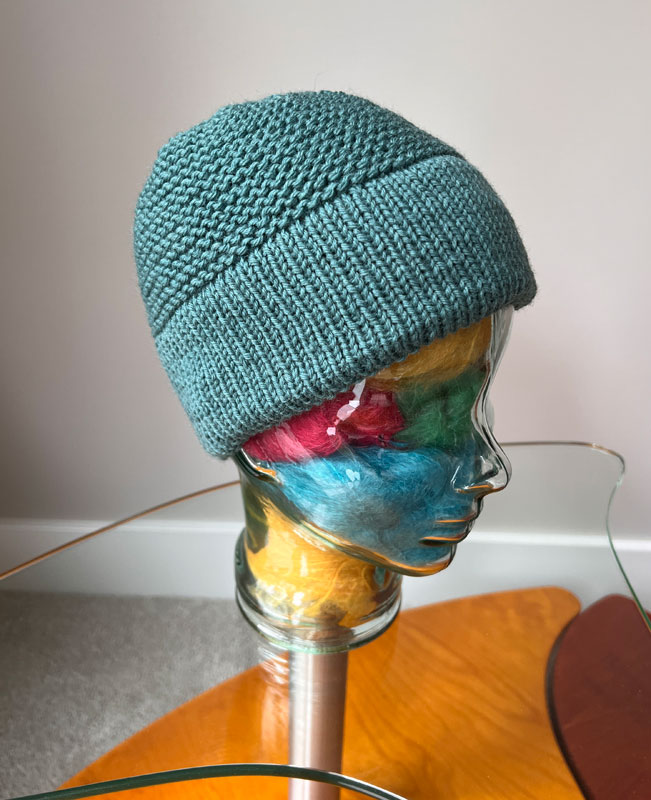
This teal version has been getting a lot of favorites on Ravelry since I posted it. Maybe that’s just because I offered the tip about starting with a provisional cast-on. It’s such a reliably great pattern. Both hats were selected from this year’s Pick-Your-Gift in an early round. Here’s the beanie laying flat. Or is it maybe lying flat?

Next up is another Seaman’s Church Institute freebie: Kristine Byrnes’s 1898 Hat. Here’s a direct link to the pdf on the Institute’s website if you’d rather go that route. (Let’s not start on the subject of singular possessives with names ending in an “s.”)

My skein of Lamb’s Pride Alaskan Sea must have been a bit short on the yardage. So I used an oddment of Orange You Glad Lamb’s Pride to add in some stripes. I’m very pleased with how that worked out.
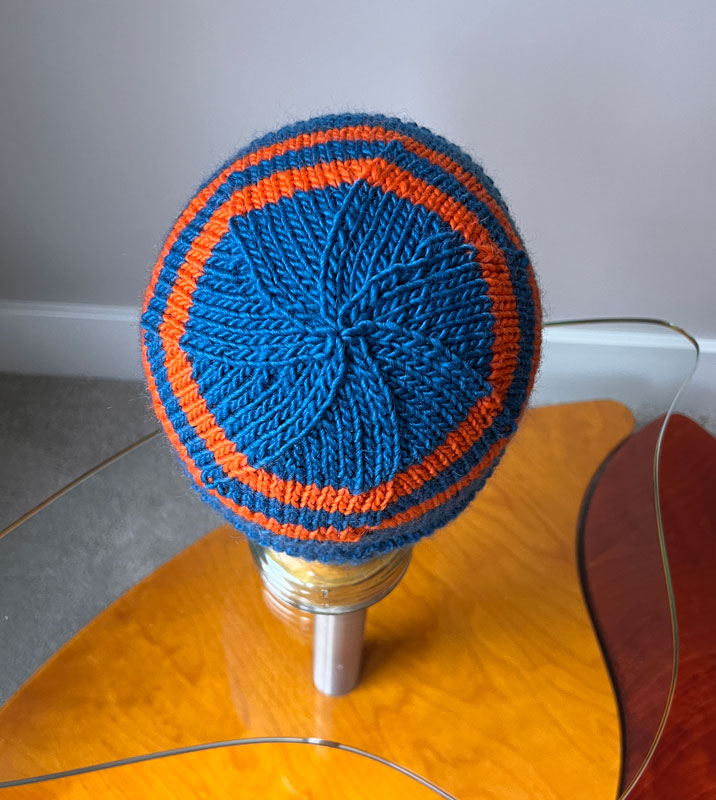
This is a great whirligig crown decreases that behaves itself well.
If you haven’t knit this hat before you’ll be surprised about how its earband is knit. Here’s a teaser: that’s not an I-cord at the bottom edge. And both the inside and the outside of the double thick earband are knit flat at the same time. Totally clever.
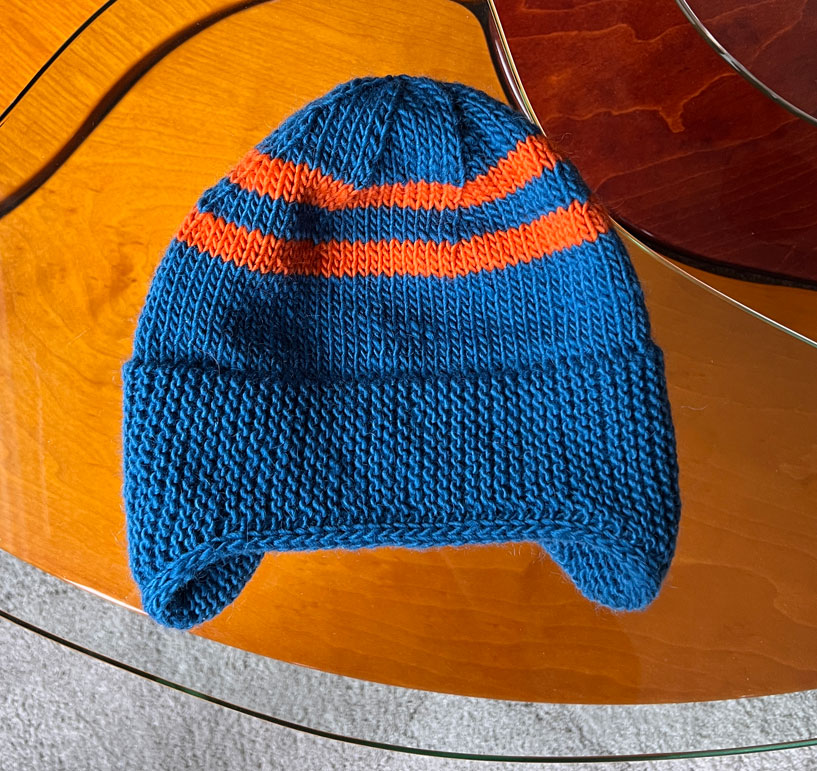
A lot of knitters have found that the earband works best if it’s knit on a smaller size needle than the body of the hat. I used US size 7 for the earband and size 9 for the body. Major pumpkin-heads may find this hat’s a tad snug. Brown Sheep Lamb’s Pride can stand up to size 10 needles and that might work better for the big heads among us, including me.

To quote a famous piggie “Th-Th-The, Th-Th-The, Th-Th… That’s all, folks!” Welcome to 2024!



